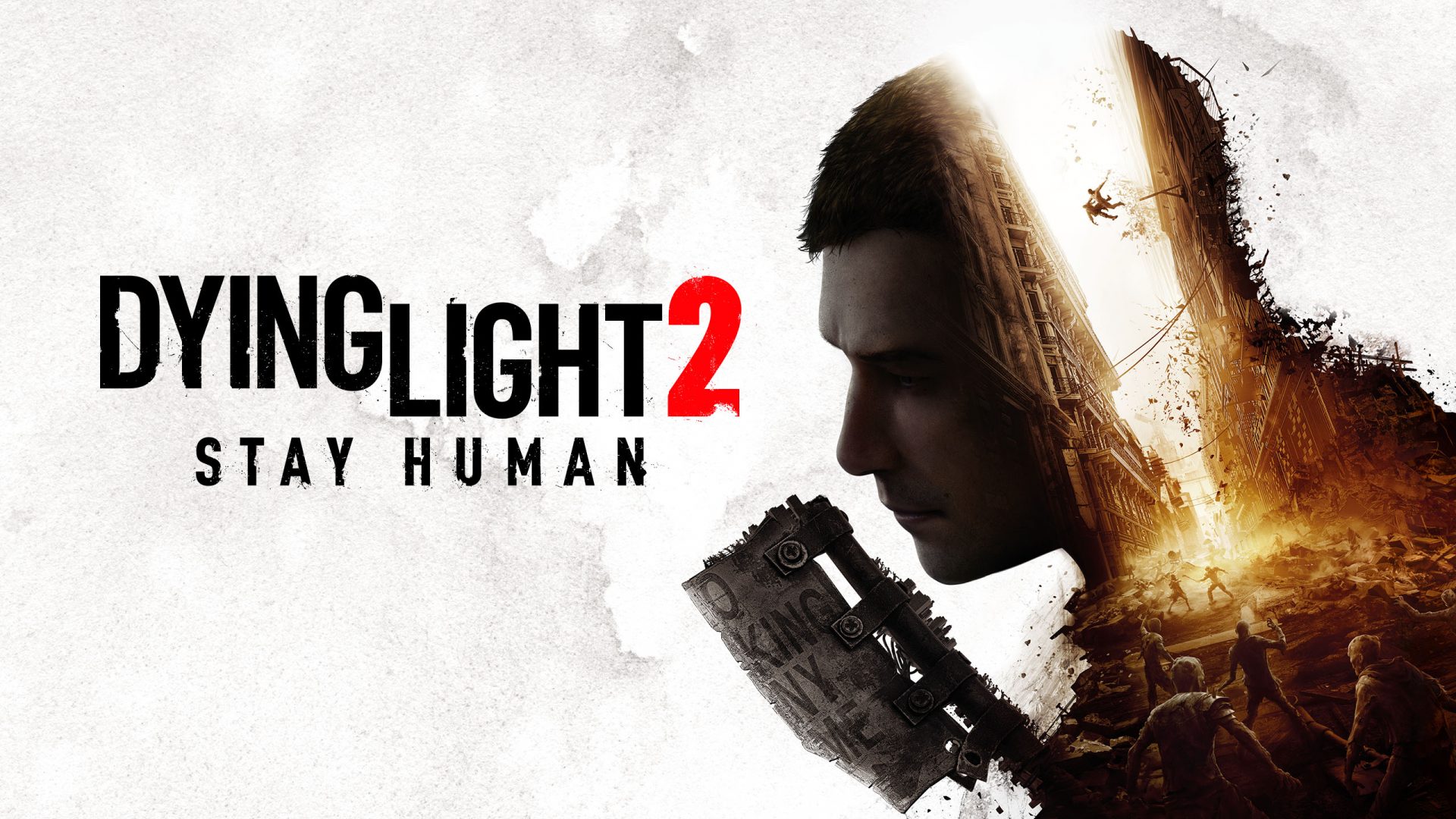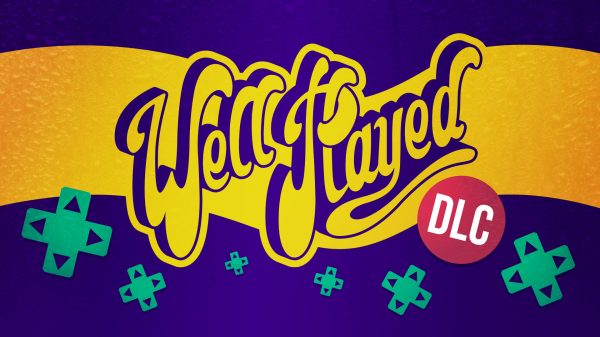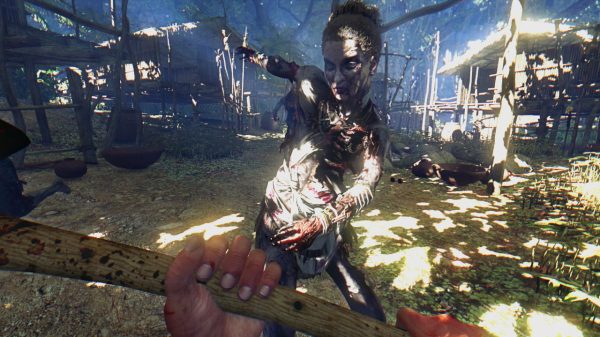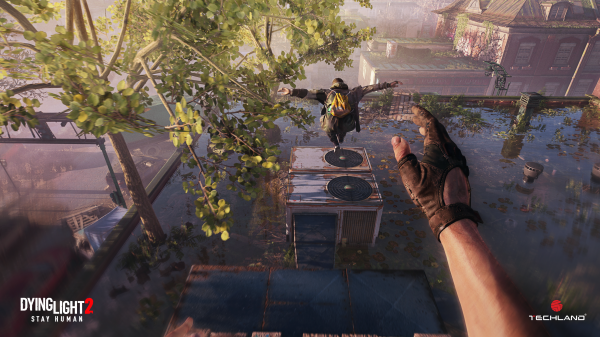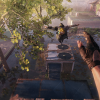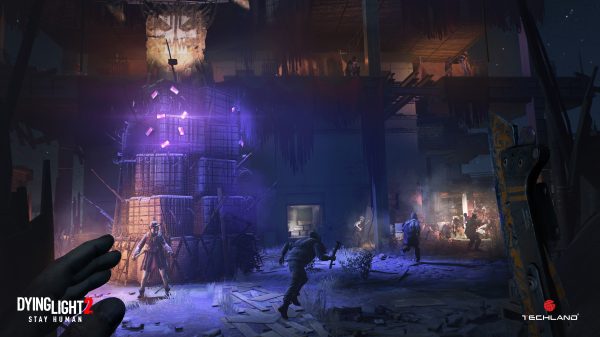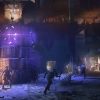When Dying Light was released in 2015 it was a breath of fresh air for the oft-criticised zombie apocalypse genre. Featuring fast-paced parkour movement, a unique day/night cycle where enemies would become more aggressive and challenging when the sun went down, and up to four-player co-op, it all came together superbly well. Six years later after several delays and development challenges, we finally have a sequel, Dying Light 2 Stay Human, which is bigger and more ambitious. But does Techland’s magic lightning strike twice?
The story is set 20 years after the events of the first game, with players jumping into the parkour boots of Aiden Caldwell who is on the hunt for his sister who has been missing for 15 years. Aiden is a Pilgrim, a messenger of sorts that travels far and wide. It’s also revealed very early on that he’s infected, and as a result it’s implied that he’s built differently from others. His investigation takes him to The City, where he’ll find a city divided by multiple factions. Nothing is free in life though, so in exchange for information or help, Aiden will need to complete jobs for the various factions to earn their trust, all the while fighting off masses of infected. Furthermore, at certain points in the story Aiden will need to make choices that supposedly impact the story and his relationships with other characters in the world.
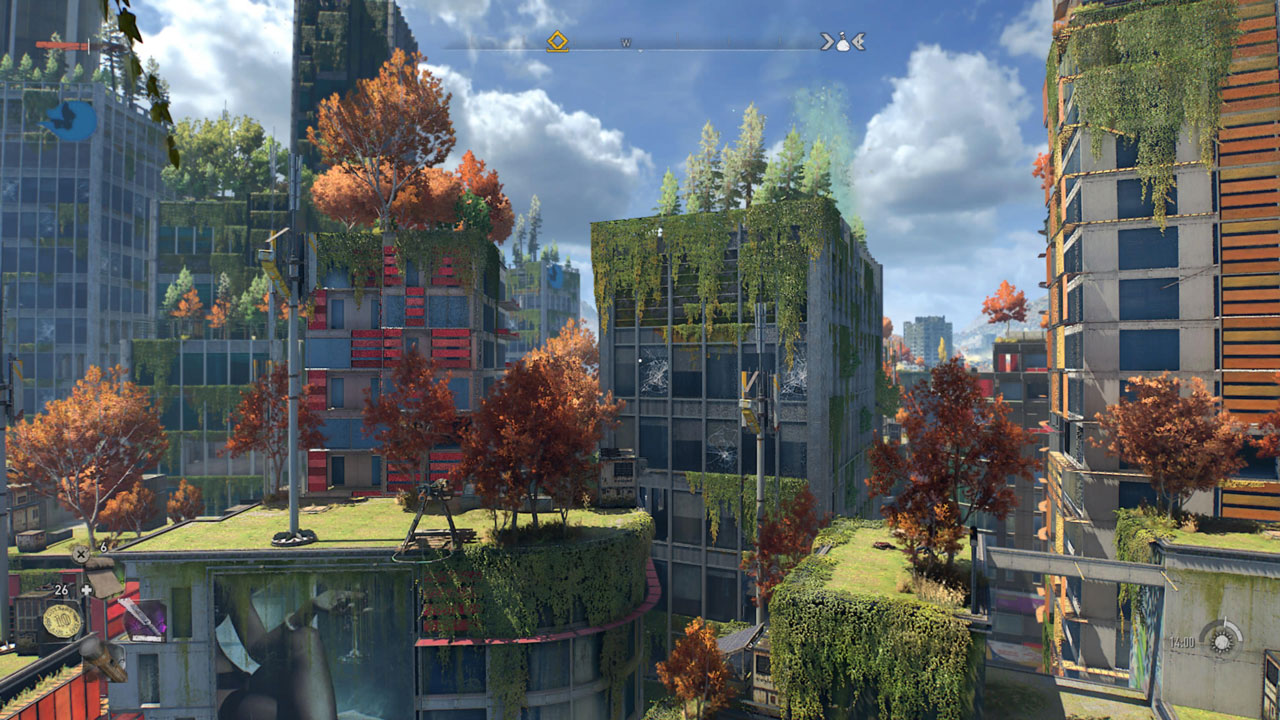
Welcome to The City
The City is separated into two main areas: Villedor and Old Villedor, each with a distinct look and feel and overrun with infected. Each of the factions have set up shop in numerous location and have their own purpose and reasoning for existing.
The Peacekeepers are a police-like faction who believe in hierarchy and that they are protectors of the citizens of The City, while the Survivors are those who live together in survivor camps across The City. The Peacekeepers and the Survivors co-exist to a degree, with each of their outposts acting as a safe zone. There’s also the Renegades, who are a bunch of lawless bandits who will attempt to kill Aiden and other faction members when they get the chance. Given their status, Aiden can raid and wipe out Renegade bases to reap the rewards.
Aiden will be joined by several recurring characters on his journey. Lawana, played by Rosario Dawson is the most notable of the NPCs, a survivor with an axe to grind, while Hakon and Jack Matt are probably the only other two that stand out. Jonah Scott does a solid job at voicing Aiden, as does Rosario Dawson with Lawana, but overall the voice acting ranges from excellent to poor, and it isn’t helped by some pretty bang average writing.
The world of Dying Light 2 is impressively massive and if you’re a fan of the Ubisoft open-world formula you’ll find plenty to like here, as the world is bursting with quests to do, buildings to loot and infected and human enemies to kill. To Techland’s credit, even though the scope of the world is enormous, it feels immersive and dense, and it’s very easy to get side-tracked from the main mission to just explore, even if there are a lot of repeated assets.
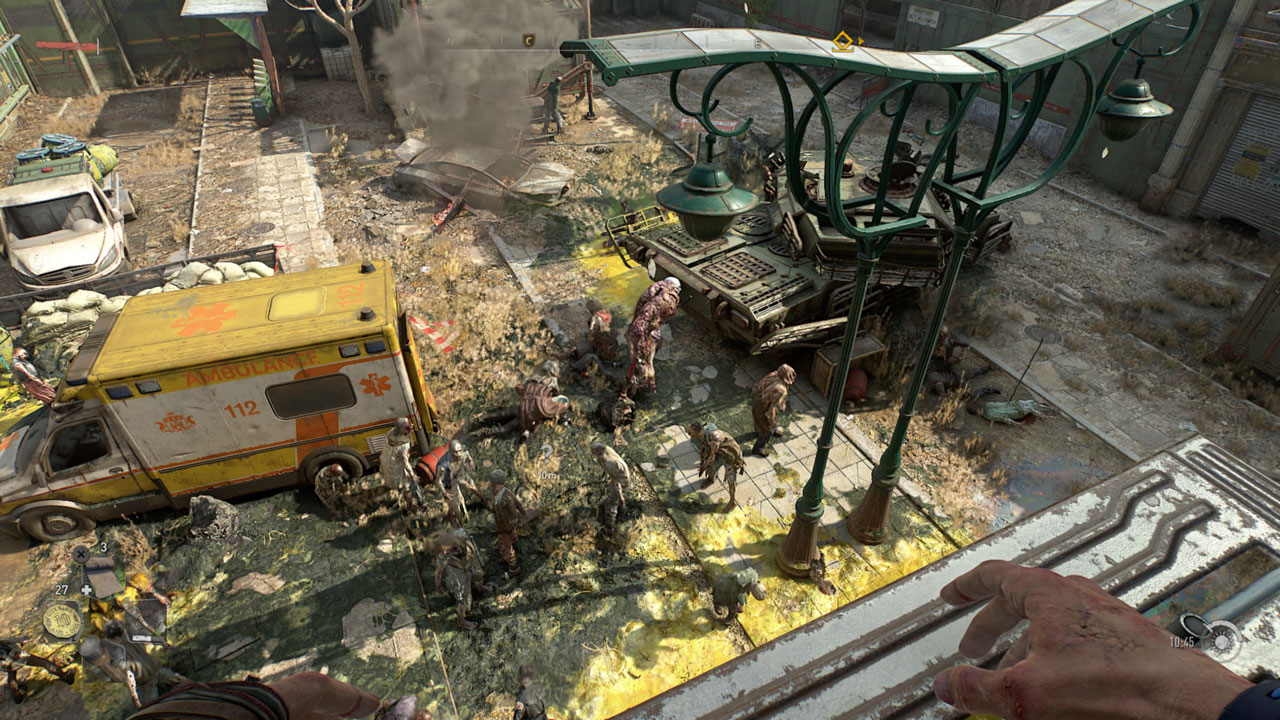
Who spilt the Mountain Dew?
Scattered around the city are several windmills and water towers. Climb to the top and activate them and you’ll unlock safe zones, while doing so with water towers will also ask you to assign them to either the Peacekeepers or the Survivors, with each faction having its own perks for doing so.
Visually it’s not going to blow anyone away, but when you’re atop a building staring into the vast distance and taking in the city it does look very good. Up close textures are a little shabby but given the scope of the game it’s nothing worth criticising. On the PS5, the game offers a visual mode and a performance mode, with the latter well and truly recommended as the former does cause the game to chug hard at times.
Much of the gameplay DNA you loved from the original is here, so don’t expect massive changes –as they say: If it ain’t broke, don’t fix it. Once again, the parkour mechanics are sublime, and the verticality of The City helps emphasise this. Traversing and jumping between rooftops at full pelt, whether running from enemies or en route to an objective, is an absolute joy. At various stages during the story you’ll unlock a paraglider and a grappling hook, allowing for even more ways to navigate the city.
One of the drawcards of Dying Light was its unique day/night cycle. During the day it’s easier to complete missions and explore the city without too much trouble, as infected are fairly slow and easy to fight off. Make too much noise and you’ll likely draw a crowd, which makes things a touch more difficult, but it’s easy just to make haste for the rooftops with your tail between your legs if you find yourself in trouble. At night though is where the real challenge awaits, with infected becoming faster and more powerful.
Once again, the parkour mechanics are sublime, and the verticality of The City helps emphasise this
It’s often a question of risk vs reward, as Aiden can only be out at night for a certain amount time (unless he recharges his immunity via UV lights) due to his infection, plus some areas with more desirable loot are easier to explore at night and killing enemies by moonlight also offers bonus XP. However, not only do the infected pose more of a threat at night but there are also more of them on the streets, making it easier to be overrun. Infected known as the Howler can trigger chase sequences (which have four levels), and once this happens it’s time to run to a safe zone like Forrest Gump. If there’s a fair distance between you and the safe zone the odds of making it back alive can be slim, especially if you have Volatiles on your tail. Taking a punt at night is easily more enjoyable than playing it safe, and whenever I did it was always a good time, even when I didn’t survive.
Combat is the game’s other main course, and a big change is that there are no firearms to be found (minor spoiler: you can craft a makeshift one with the right resources), with the Peacekeepers pulling a John Howard and getting rid of them all after a shooting in The City several years prior. It means that Aiden will need to rely on melee weaponry such as machetes, axes, and maces to hack and slice the enemies in his path, although your stamina will determine how long you can fight for before needing a breather. The higher the level of the weapon, the more damage it will do and more durable it is. Weapons can also be modified to increase damage as well as deal elemental damage (such as fire, shock and ice). But it’s not just about attack, and every now again you’ll need to defend either by parrying or dodging enemy attacks. Time it right and you’ll cause your opponent to stumble, opening them up for a damaging blow.
Aiden can yield up to four weapons, four consumables and four throwable weapons (Molotovs, grenades and the like) at a time, using the d-pad to switch between them on the fly. He also has a generous inventory, so you’ll become accustomed to being stockpiled with gear. Excess gear you don’t want can be sold to traders at safe zones, who will also have gear and upgrades available for purchase.
As you explore and kill infected, you’ll unlock new combat and parkour skills, such as the dropkick (by far the best attack in the game), power attacks, and the ability to wall run. This is done by obtaining XP which is granted in fairly standard RPG fashion by completing quests, killing enemies and parkouring through the world. Aiden’s health and stamina will need to be at a required level for some skills, which can be upgraded by using inhibitors found in the world. Each upgrade costs three inhibitors and you can choose whether to upgrade your health amount and immunity at night time or your stamina.
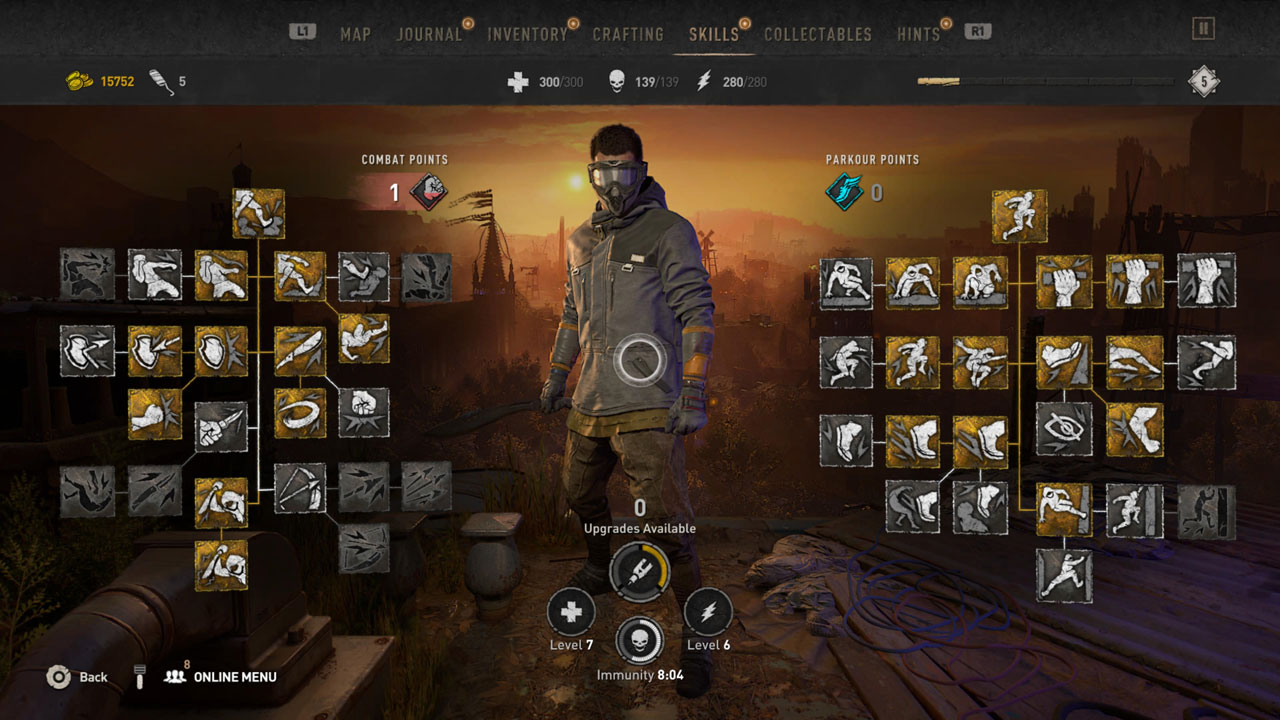
Upgrade your skills
When it all comes together it’s some of the most enjoyable action gameplay out there, but while the moment-to-moment gameplay is where the game shines, it isn’t without its flaws.
Firstly, despite telling anyone who’ll hear it that he’s a seasoned traveller, Aiden is about as fit as I am (read: not very) and at the beginning struggles to climb a small ladder without puffing like he’s punched a pack of darts a day for the past 10 years. I get that this feeds into the skill upgrade system, and after a couple of stamina upgrades it becomes less of an issue, but come on, if you claim to be as fit as a fiddle you should be able to last more than a few seconds climbing a ladder.
Weapon durability is another frustrating element, especially as Techland has done away with weapon repairs this time around, meaning all weapons will have one life only. The saving grace is that you’ll never be short of options, but if you find a weapon that you like and modify, you better make its use count.
Another odd design choice is that when you die you lose consumables and any secondary weapons that you used. It makes sense when you’re simply exploring the open world and bite off more than you can chew because there are no checkpoints as such, however when it happens during boss fights or set pieces it’s pretty frustrating. On more than one occasion I had a stash of Molotovs, grenades and health packs saved up for a showdown that I knew was coming. I used all Molotovs and grenades and a couple of health packs only to die, but upon restart none of the resources I had used returned to my inventory, making the fight more challenging on subsequent attempts.
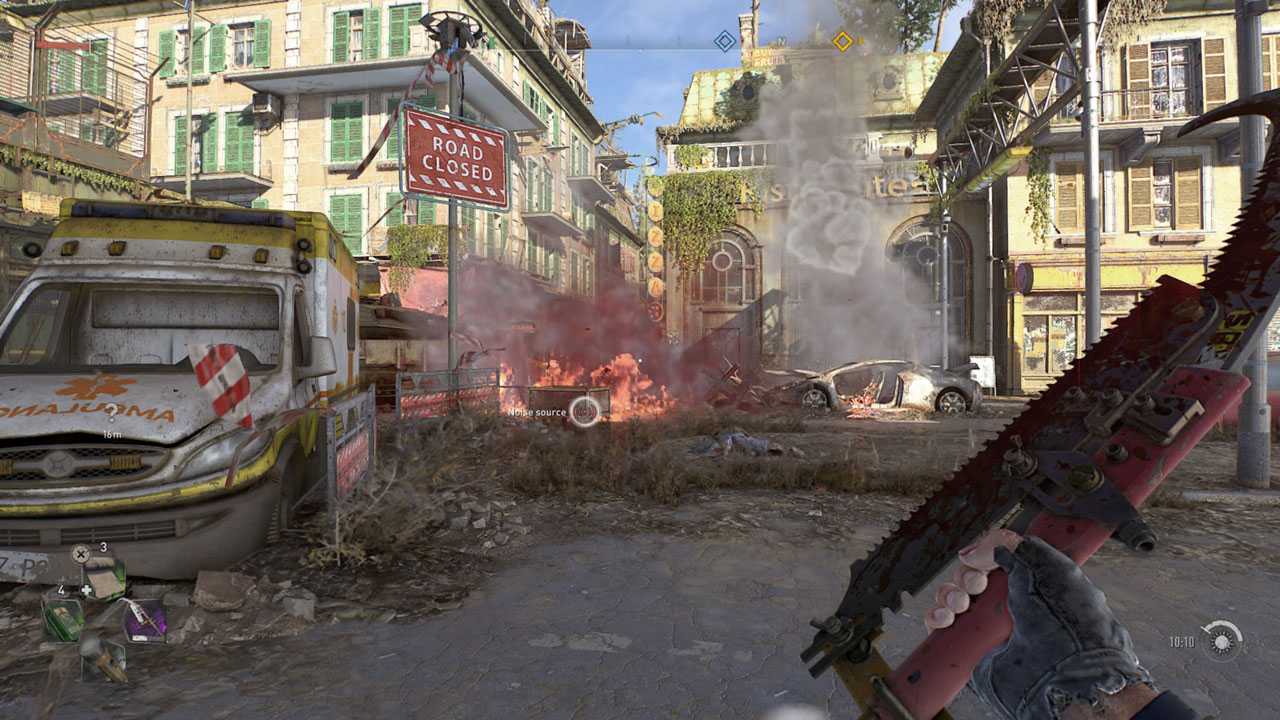
Bringing the noise
Last of all, the final boss fight could be the worst in video game history. Why Techland thought they needed to have a boss fight with waves I’ll never know, and making matters worse is that during the second wave the boss got stuck in the environment, forcing me to restart. It was a painful end to a game where the narrative already felt like it was dragging its feet.
Not that I was expecting The Last of Us Part II, but the narrative is the most disappointing thing about Dying Light 2, squandering its promising premise. It’s a shame because some of the early missions and side quests promise the opposite. The story isn’t outright bad but it’s not good either, and it starts to feel bogged down by tedious objectives (switching on the power, climbing tall buildings, fetch quests, you know the drill), a convoluted plot that gets more absurd towards the end and choices that don’t seem to matter.
The story can be played either solo or via multiplayer, which supports up to four players. One of the aspects I loved about the original was playing in co-op. Unfortunately, during the review phase the game’s co-op was not available. Techland says that it will be activated once the day one patch hits, but given they’re cutting it this fine it makes me wonder if it’s going to work as it should. If it does then I have no doubt it will elevate your experience.
There’s one part of a mission during the latter stages of the game that involves someone getting trapped in an elevator (I’m keeping it vague due to spoilers), but this sequence is one moment when everything comes together: the stakes feel high, the voice acting is excellent and the soundtrack increases the tension. But it’s like trying to find the pink-flavoured gems in a packet of Fruit Tingles, there’s just never enough of them to satiate the appetite.
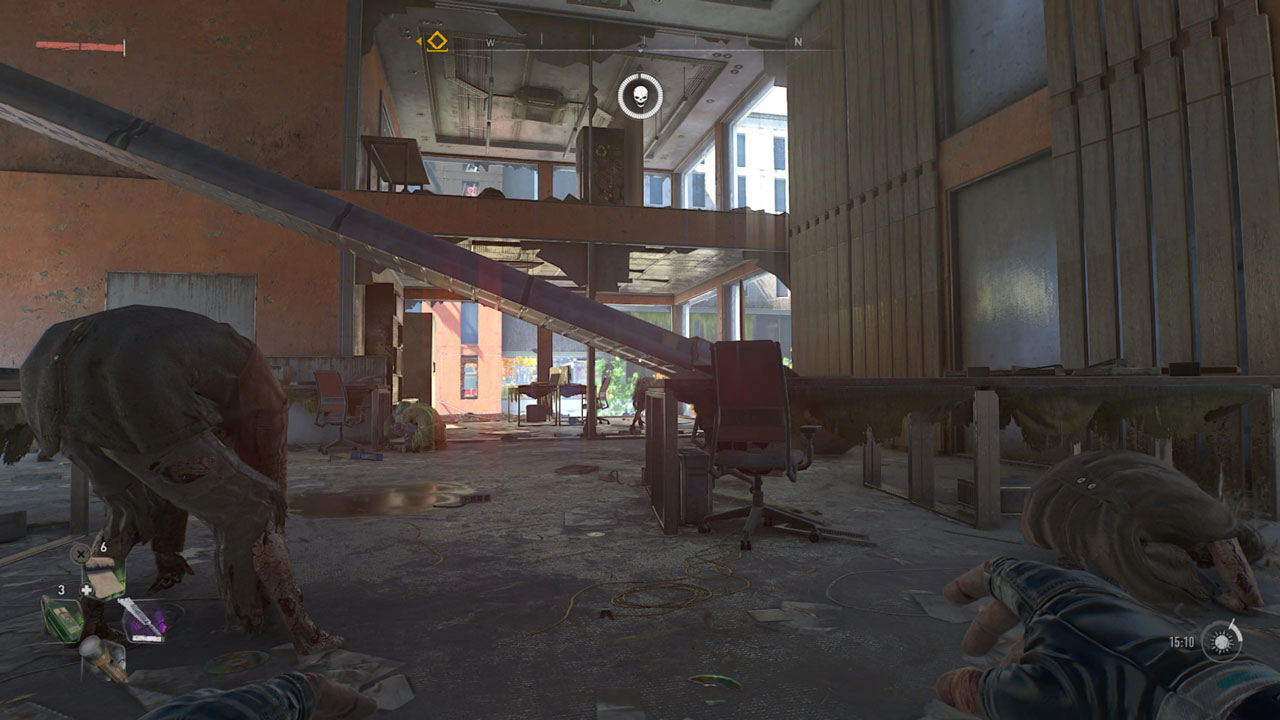
Be very, very quiet
When it comes to the soundtrack, I’m a big fan of Olivier Derivière – in fact I’d say he’s my favourite video game composer, so when it was announced that he was working on Dying Light 2 I was excited. This isn’t his best work, but the soundtrack does its job and enhances several key story moments.
Unfortunately, the game is a bit rough around the edges. I encountered more than 20 game crashes throughout my playthrough, as well as bugs where objectives didn’t trigger, consumables I crafted didn’t appear in my inventory, enemies getting stuck in the environment and more. I’m fairly lenient when it comes to pre-release bugs but collectively they sullied my experience somewhat. Patches deployed during the review phase did mitigate the issues, so hopefully the day one patch irons out all the kinks that remain.
Final Thoughts
To say Dying Light 2 is a mixed bag isn’t a fair assessment, but that’s how I felt at times. The parkour mechanics, the day/night cycle, fighting off waves of infected, and the immersive nature of the world are all top-notch and it can be such a fun game to play. The gameplay does so much heavy lifting but that can only carry it so far, especially without co-op which is a game-changer. Unfortunately the weak story, frustrating design choices, awful boss fight and performance issues collectively took their toll on the experience. I’d certainly recommend fans of the first play it, but it does fall short of expectations.
Reviewed on PS5 // Review code supplied by publisher
Click here for information on WellPlayed’s review policy and ethics

- Techland
- Techland
- PS5 / PS4 / Xbox Series X|S / Xbox One / PC
- February 4, 2022



Despite a childhood playing survival horrors, point and clicks and beat ’em ups, these days Zach tries to convince people that Homefront: The Revolution is a good game while pining for a sequel to The Order: 1886 and a live-action Treasure Planet film. Carlton, Burnley FC & SJ Sharks fan. Get around him on Twitter @tightinthejorts





